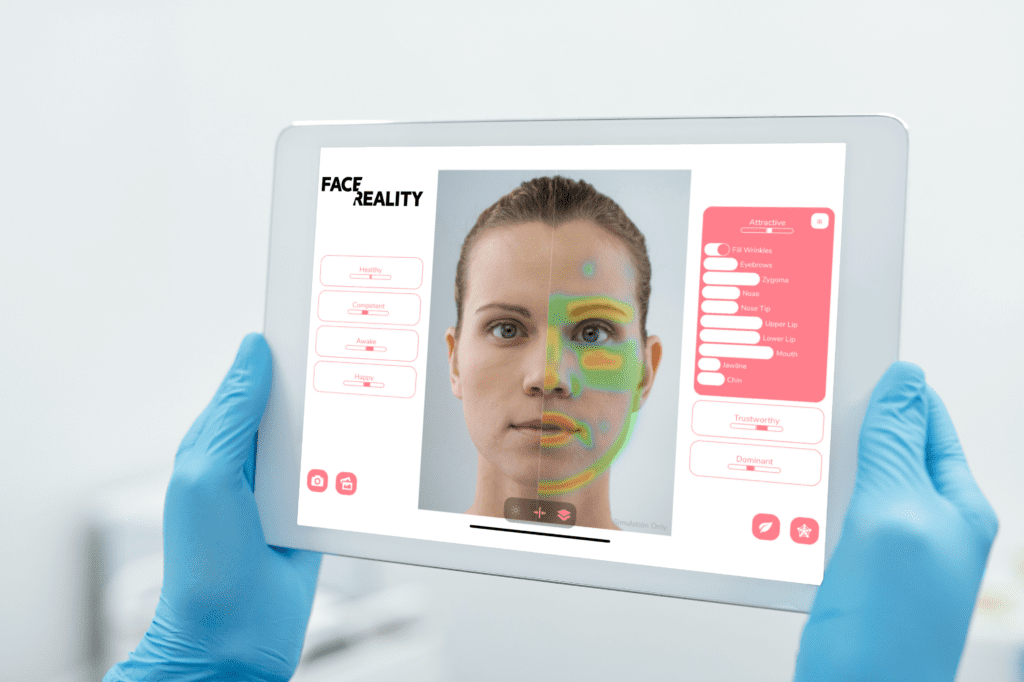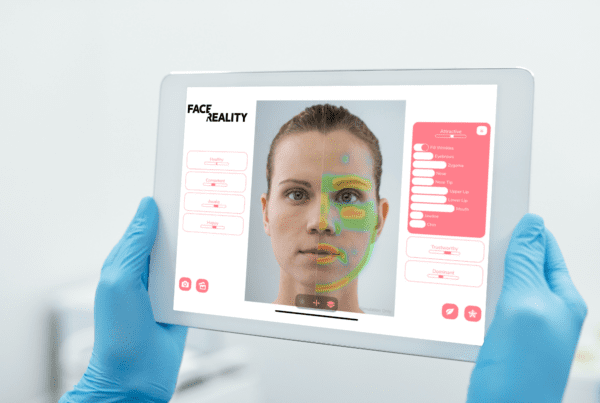As aesthetic practitioners and plastic surgeons, our role extends beyond performing procedures, surgery and enhancing appearances; it includes managing the expectations of our patients. Nurturing realistic expectations is a crucial element of a successful aesthetic journey. In this article, we will explore the importance of managing expectations from the practitioner’s perspective and how tools like FaceReveal can be invaluable in this process.
The Art of Managing Expectations
Aesthetic consultations are a delicate balance between the aspirations of the patient and the expertise of the practitioner. Here are some key insights into effectively managing expectations:
1. Open and Clear Communication

The foundation of expectation management lies in transparent and open communication. Encourage your patients to express their desires and concerns freely. Actively listen to their goals and address any misconceptions or unrealistic expectations. However, clearly define the possibilities, and make sure the patient understands the impact of treatments. Visual aids can help here.
2. Realistic Outcomes
While it’s essential to respect your patient’s desires, it’s equally important to provide a realistic assessment of what can realistically be achieved. Educate patients about the limitations of procedures and the importance of maintaining the harmony of their natural features.
3. Visual Tools that help aesthetic practitioners

Incorporate visual aids during consultations to illustrate potential outcomes. Tools like FaceReveal can be invaluable in this regard, providing an objective analysis of a patient’s current appearance and offering simulations of potential treatments. This visual representation helps bridge the gap between expectation and reality.
How FaceReveal Transforms Plastic Surgery Consultations
FaceReveal is a game-changer in the world of aesthetic consultations. Here’s how it can revolutionize the expectation management process:
1. Objective Assessment
FaceReveal offers an objective analysis of a patient’s appearance, providing insights for various traits such as attractive, awake, healthy, competent and more. This data serves as a data-based starting point for the consultation, ensuring that both the practitioner and the patient have a clear understanding of the current situation.
2. Informed Decisions

By utilizing FaceReveal’s insights, practitioners can guide patients towards making informed decisions. The visual simulations allow patients to see how subtle changes can enhance their natural beauty while maintaining harmony. The patient, and practitioner can also see the effect of plastic surgery or aesthetic treatments on their appearance.
3. Realistic Simulations for Plastic Surgery and Aesthetic Medicine
FaceReveal’s technology enables the creation of realistic simulations of potential treatments fo. These simulations help patients visualize the outcomes, reducing the chances of unrealistic expectations and ensuring that the desired changes align with their unique features.
Conclusion: Empowering Both Practitioners and Patients
Managing expectations in aesthetic consultations is a collaborative effort that empowers both practitioners and patients. While patients seek to enhance their appearance, practitioners aim to achieve this in a way that respects the individual’s unique features and maintains natural harmony.
Tools like FaceReveal are invaluable in this process, offering objective assessments, informed decision-making, and realistic visual simulations. By integrating such technology into consultations, practitioners can navigate expectations more effectively, fostering trust, satisfaction, and ultimately, achieving results that leave both parties delighted.
Incorporating FaceReveal into your consultations is not just about managing expectations; it’s about elevating the entire aesthetic experience, ensuring that every transformation leaves a positive impact on patient’s lives, beyond beauty



